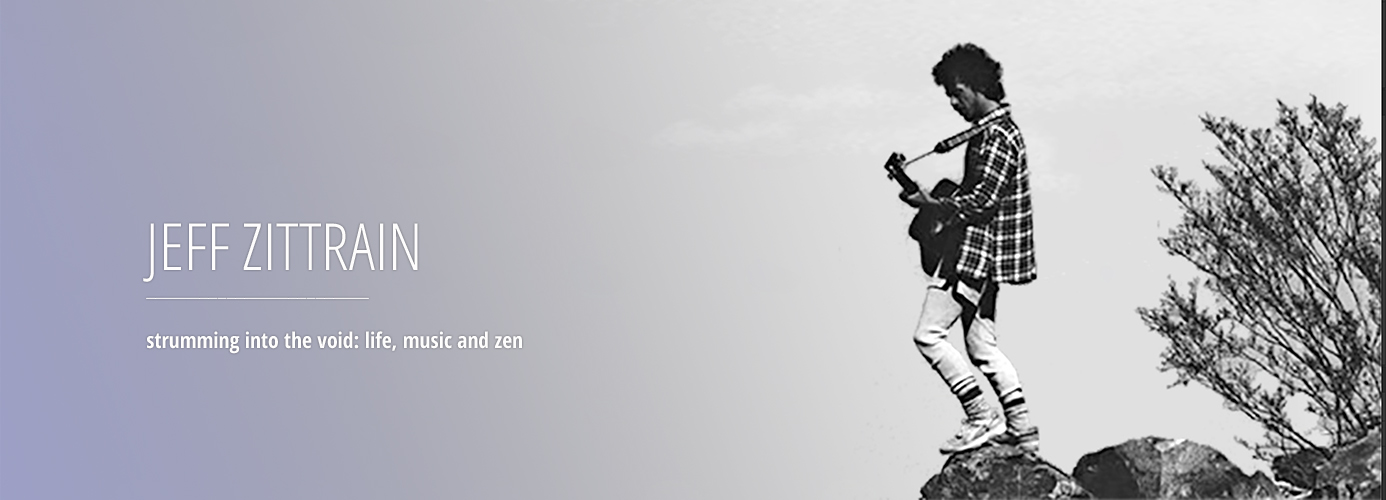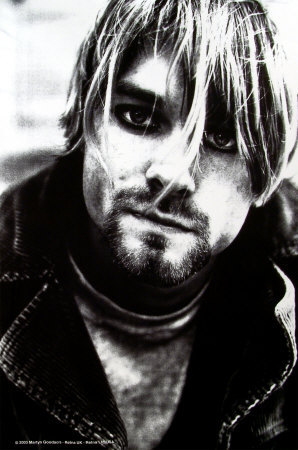
First off, I’d like to thank everyone for the comments on my last column, which focused on Krist Novoselic’s book “Of Grunge and Government.” This got me thinking – the relevance of a band like Nirvana to the jamband scene and the concept of “Right Action” raises an important point. Which is that while there are important lessons to be learned about the power we have to create our own realities and not fall into and indulge bad trips – on the other hand, it seems to me that Right Action and true transcendent jamming are about heading into the deepest regions of existence, which can also bring us into less obviously “pleasant” realms. It’s not rock and roll if it doesn’t have an edge – and sometimes it even disappears over that edge.
But you don’t need to be afraid of the edge, or see it as antithetical to transcendence. Even Nirvana, a punk band with more than its share of pain, rage, and despair, chose as their moniker a term for ultimate transcendence. (This doesn’t mean there aren’t real-life consequences to the journey, as Kurt Cobain’s final shotgun blast makes painfully crystal clear).
But to understand the heart of the psychedelic jam, let’s look first to its real granddaddies, born and forged in the legendary Acid Tests, the Grateful Dead. Often wrongly dismissed as light, happy, hippie music, Dead songs are actually chock full of woe, misery, and betrayal – right in keeping with their roots in folk and blues – the music they loved because it seemed to tell the truth against the white-washed “Leave it to Beaver” 50’s.
However, the typical Dead character is usually down but not out, leaving hope for redemption. “Dust off those rusty strings just one more time – gonna make ‘em shine”, “I’ll get up and fly away”, “Goin’ where the water tastes like wine”.
But even the Dead were willing to leave their sunshine daydream – listen to “Victim or the Crime” – the uncertainties of “Dark Star” or tragedy of “Death Don’t Have No Mercy” are one thing, but “Victim or the Crime” hits more self-doubt and anxiety than many Deadheads wanted to consider with their brains (and hearts and souls) opened up by psychedelics. I remember a show at Cal Expo in Sacramento where a beautiful “Box of Rain” second set opener was immediately crushed by “Victim or the Crime” like Godzilla stepping on Bambi, from which the rest of the show never recovered…
But consider the darker bands that also arose from the drug culture – the Doors, the Velvet Underground, Pink Floyd, the Stones – much of their power came from their darkness. Still, somehow you felt that they weren’t evil themselves – rather, they accepted the shadow side and assimilated it – or tried to. All the terrors of Pink Floyd’s “Animals” are bookended by the tender “Pigs on the Wing”. “Sympathy for the Devil”, Dancing with Mr. D”, and “Monkey Man” are, like all Stones songs, essentially playful, and even if the Doors disappeared way over the edge in “The End”, that song is consciously theater/myth/therapy with, like Pink Floyd, a human tenderness at its core.
Even Black Sabbath, whose music still sounds scary and otherworldly to me in a way that the sillier heavy metal bands don’t – which is why their thread reached all the way into 90’s grunge and beyond – seems ultimately humane – listen to “Children of the Grave” or “War Pigs”, two songs with evil-sounding titles that are actually condemning the violence of the world (and of course MTV’s “Osbournes” images of Ozzy doddering about his house has only reinforced both the humane and over-the edge qualities that you hear in the music).
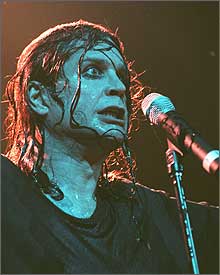
“I’m the bleedin’ Prince of Darkness…”
– Ozzy
But if we’re talking dark, let’s look at the original Man in Black. “I shot a man in Reno – just to watch him die” sings Johnny Cash to cheers from the inmates in one of the more bone-chilling moments in pop music history (although I read in a book detailing the recording of “Johnny Cash at Folsom Prison” that those cheers were actually overdubbed later…). But somehow, it’s also redemptive, because there’s Johnny actually understanding these lost souls, and they cheer to his faith and struggle to be a good man as well.

The Man in Black, in black
“The sinner is at the very heart of Christianity” states Graham Greene in the epigraph to his brilliant novel “The Heart of the Matter” which I had to read in high school, and when I compared that quote to “Just as every cop is a criminal and all the sinners saints” from “Sympathy for the Devil”, my teacher actually praised my comment (which is possibly the moment that sent me down this lost highway of free-form connections wherein rock music elucidates everything else, from the sacred to the profane, the humorous to the epic, the alpha to the omega – and you don’t even need six degrees to get to Kevin Bacon).
In fact, sometimes the unexpected connections are the best, because they illuminate something that runs deeper than the specific example. Here’s one: “Johnny Cash at Folsom Prison” is like the sanctuary karaoke bar from TV’s “Angel”, where all manner of horrible demon can go and bare their souls in (bad) song, and not be judged, morally or, maybe more thankfully, musically.
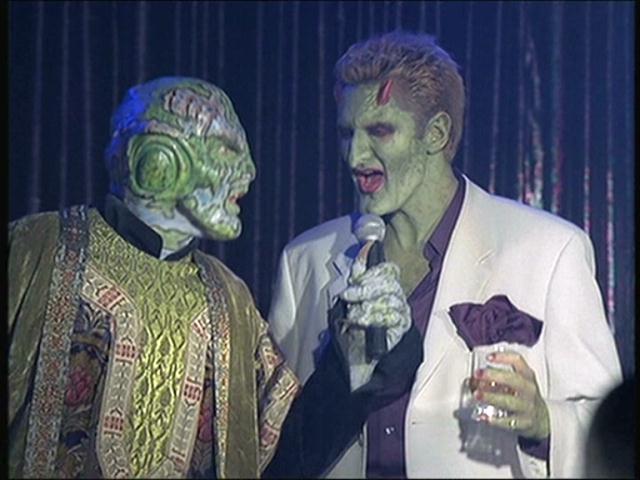
Demons busting out “I Will Survive” at the Karaoke bar in “Angel.”
And as long as I’ve moved to TV, I will swing back to Johnny Cash with a classic episode of “Columbo” where he plays a country singer (surprise) who kills his wife. At the climax, Columbo confronts him alone in the dark woods and explains how he knows Cash is guilty. Johnny Cash asks why Columbo is unafraid to be out there with a murderer, and he replies “Someone who can sing like that can’t be all bad”.
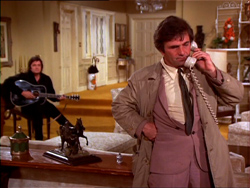
The Man in Black, busted…
There’s something about art, perhaps, that’s right action. The redemption in the creative act, in exposing one’s higher self. Even the horrific fantasies of the Marquis de Sade belie a damaged soul outraged at the cruel injustices of the world. (In real life, when he was released from the Bastille and had actual political power Sade refused to condemn any prisoners to death.)
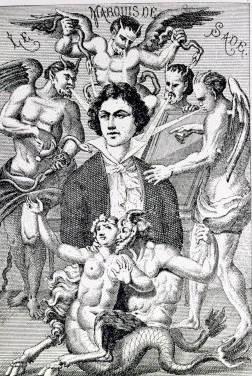
The Marquis DeSade and his personal demons, painting 1912
(And incidentally, lest you think Sade is straying too far from our musical mission here, listen to the Velvet Underground’s “Venus in Furs” or, on a lighter note, watch the much-maligned Dead video for “Hell in a Bucket”).
It seems to me we look to rock and roll, and the jam, and art, for truth. And only by confronting and exploring even dark truths, can we gain the strength and credibility to choose and even understand “Right Action.”
